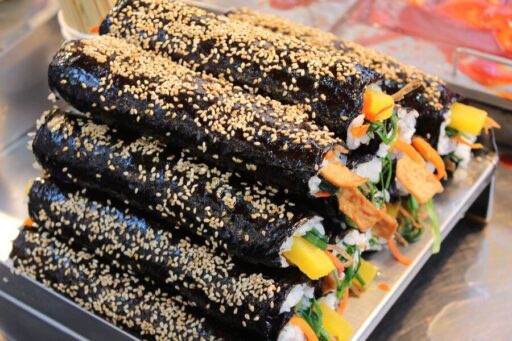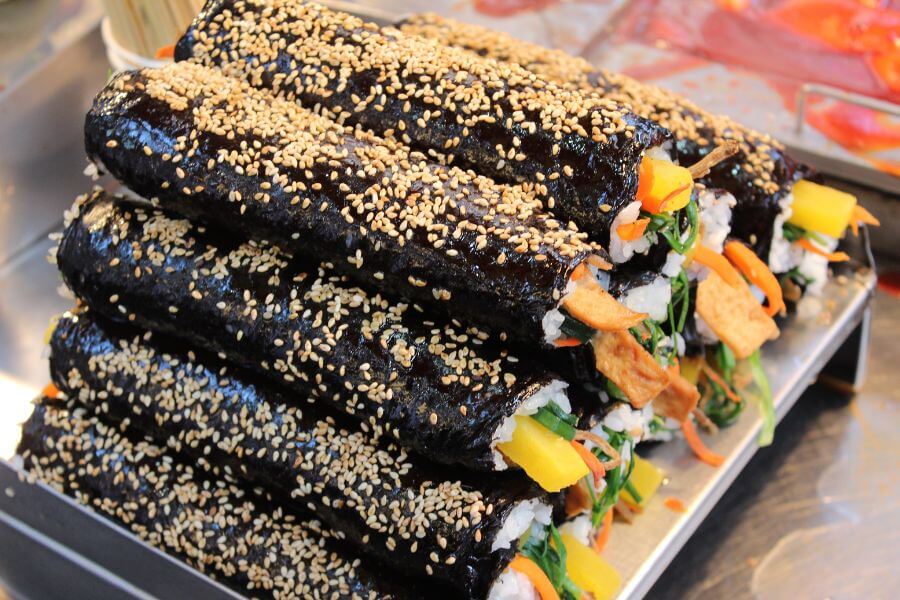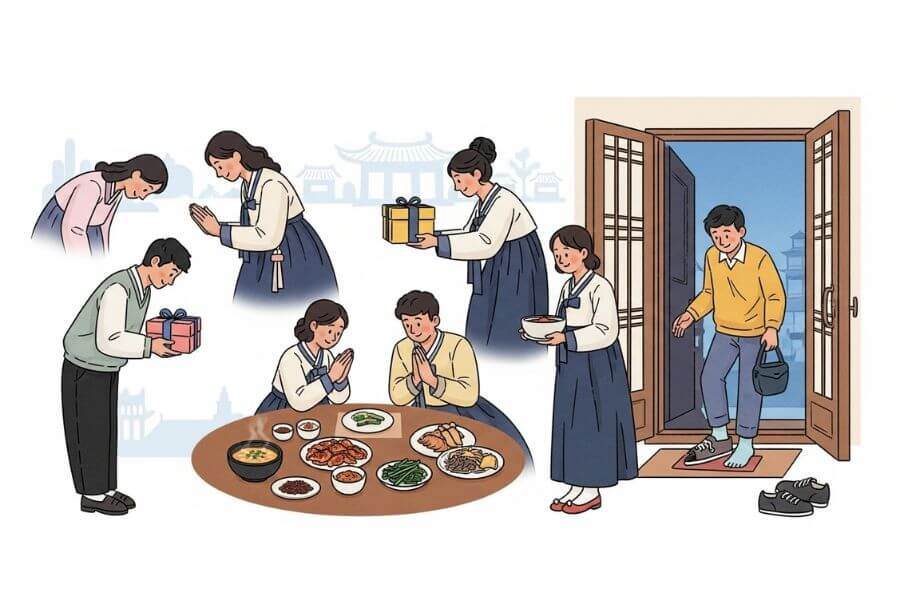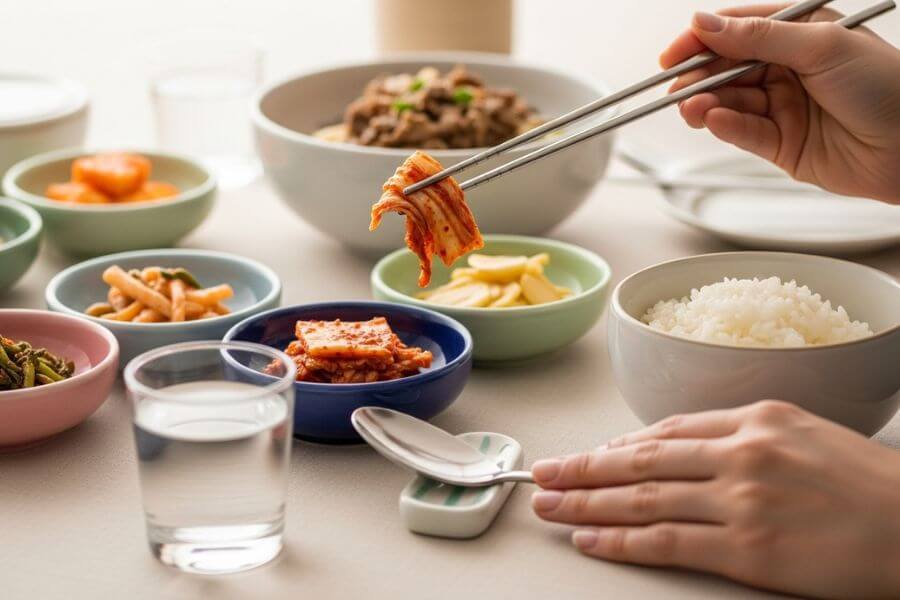Korean food is loved all around the world, and one of its most iconic dishes is gimbap (also spelled kimbap). This colorful rice roll, wrapped in seaweed, is simple, delicious, and full of flavor.
At first glance, gimbap might look like Japanese sushi, but it’s quite different. Gimbap uses cooked ingredients instead of raw fish, and the rice is seasoned with sesame oil, not vinegar. It’s the go-to food for school lunches, road trips, and picnics in Korea, a true comfort meal made with love.
In 2025, gimbap is more exciting than ever. From classic recipes to modern, healthy, and fusion versions, it continues to win hearts around the world. Here are the 10 best Korean gimbap you must try this year, complete with what makes each one special.
1. Classic Gimbap (원조 김밥 – Wonjo Gimbap)
The Classic Gimbap is the original version everyone knows and loves. It’s made with sesame oil–seasoned rice, spinach, carrots, egg, pickled radish (danmuji), and crab stick or beef.
It’s slightly sweet, savory, and nutty, with a perfect balance of textures. In 2025, many shops are giving the traditional recipe a modern twist by using organic vegetables, premium sesame oil, and even cauliflower rice for a lighter option. It’s still the same comforting taste Koreans have loved for generations, just a little fresher.
2. Tuna Mayo Gimbap (참치마요 김밥 – Chamchi Mayo Gimbap)
Tuna Mayo Gimbap is one of Korea’s most popular comfort foods. It’s filled with creamy tuna mixed with mayonnaise, plus cucumber, carrots, egg, and pickled radish for a nice crunch.
It’s rich but not heavy, creamy, salty, and refreshing all at once. In 2025, expect more creative versions like spicy tuna mayo, avocado mayo, or wasabi mayo gimbap at trendy Korean cafés and delis. If you’re new to gimbap, this one’s an easy favorite.
3. Bulgogi Gimbap (불고기 김밥)
If you love Korean BBQ, you’ll fall in love with Bulgogi Gimbap. It’s made with thinly sliced marinated beef, cooked in a sweet and savory sauce made of soy sauce, garlic, sugar, and sesame oil. The beef is rolled with rice, spinach, carrots, egg, and pickled radish.
Every bite tastes like a mini Korean BBQ meal. In 2025, some restaurants even use Hanwoo (Korean beef) or add truffle oil for an upgraded version. Pair it with a warm bowl of fishcake soup (oden) and you’ve got the perfect Korean comfort meal.
4. Kimchi Gimbap (김치 김밥)
Kimchi Gimbap is spicy, tangy, and full of flavor. It’s made with stir-fried kimchi, sometimes with pork or spam, along with rice, egg, carrots, and pickled radish.
It’s a favorite among spice lovers because it has that signature Korean kick. Some versions even use kimchi fried rice as the filling for an extra punch. If you love kimchi, this one is a must-try in 2025.
5. Cheese Gimbap (치즈 김밥)
For a creamy and satisfying twist, Cheese Gimbap combines the best of Korean and Western flavors. It usually has melted mozzarella or cheddar cheese, with ham, crab stick, or egg inside.
It’s warm, soft, and slightly salty, and the melted cheese pairs perfectly with the sesame-seasoned rice. In 2025, you’ll find premium versions with truffle cheese, smoked gouda, or even torched cheese toppings for a gourmet upgrade.
6. Vegetable Gimbap (야채 김밥 – Yachae Gimbap)
If you prefer something light and healthy, Vegetable Gimbap is the perfect choice. It’s filled with fresh carrots, spinach, cucumbers, burdock root, and pickled radish.
The flavor is clean and refreshing, and the sesame oil adds a nutty aroma. With more people choosing plant-based diets, 2025 has brought even more vegan options, some made with avocado, tofu, mushrooms, or quinoa rice. It’s healthy, colorful, and satisfying.
7. Spicy Pork Gimbap (제육 김밥 – Jeyuk Gimbap)
Spicy Pork Gimbap is for those who crave a little heat. It’s made with stir-fried pork marinated in a gochujang (Korean chili paste) sauce, combined with rice, carrots, egg, spinach, and pickled radish.
The flavor is bold, smoky, and deliciously spicy. Many people like to wrap it in a perilla leaf for a fresh, herbal note that balances the spice. Some gimbap shops in 2025 are even making vegan spicy pork versions using plant-based meat: same flavor, less guilt.
8. Egg Roll Gimbap (계란말이 김밥 – Gyeran Mari Gimbap)
Beautiful and soft, Egg Roll Gimbap replaces the seaweed wrapper with a thin omelet. Inside, you’ll find rice, crab meat, spinach, and carrots, though some modern cafés add cheese or ham for more flavor.
It’s light, fluffy, and mildly savory, perfect for breakfast or brunch. In 2025, Korean cafés often serve mini egg roll gimbap with salads or soups. It’s as pretty as it is tasty, and it looks amazing in lunchboxes or photos.
9. Perilla Leaf Gimbap (깻잎 김밥 – Kkaennip Gimbap)
For something refreshing and aromatic, try Perilla Leaf Gimbap. The perilla leaf, which has a slightly minty and nutty flavor, wraps around the rice and fillings like beef, tuna, or tofu, along with egg, carrots, and pickled radish.
It tastes light, fragrant, and clean, very different from other types of gimbap. Perilla leaves are also full of nutrients like omega-3s, calcium, and antioxidants, making this one of the healthiest options you can find in 2025.
10. Mini Gimbap (꼬마 김밥 – Kkoma Gimbap)
Mini Gimbap (or Kkoma Gimbap) is small, bite-sized, and super cute. These rolls have the same ingredients as classic gimbap but are smaller and easier to eat. You’ll often find them filled with spicy tuna, anchovy, kimchi, or bulgogi.
They’re perfect for snacking, picnics, or kids’ lunchboxes. In 2025, air-fried mini gimbap is becoming a trend: crispy outside, soft inside, and totally addictive. They’ve even gone viral on TikTok under the hashtag #MiniGimbapChallenge.
Where to Find the Best Gimbap in 2025
In Korea, you’ll find gimbap almost everywhere, from small mom-and-pop shops to famous chains like Gimbap Cheonguk (Gimbap Heaven). In Seoul, Jinju Gimbap and Gwangjang Market are popular spots for freshly rolled, street-style gimbap.
If you’re outside Korea, don’t worry, gimbap is now global. In cities like Los Angeles, New York, Tokyo, and Singapore, cafés such as Gimbap Lab and Kimbap & Beyond serve modern versions with ingredients like truffle, avocado, and smoked salmon. Wherever you are, you’re never too far from a great gimbap roll.
Conclusion
Gimbap is more than a simple rice roll; it’s a taste of Korean culture, tradition, and creativity. From classic recipes to modern twists, this dish keeps evolving while staying comfortingly familiar.
Whether you love spicy pork, sweet bulgogi, or light vegetable rolls, there’s a gimbap for everyone. In 2025, Korean food continues to go global, and gimbap remains one of its most beloved dishes. So next time you’re craving something tasty, portable, and satisfying, skip the sandwich and grab a Korean gimbap roll instead.





